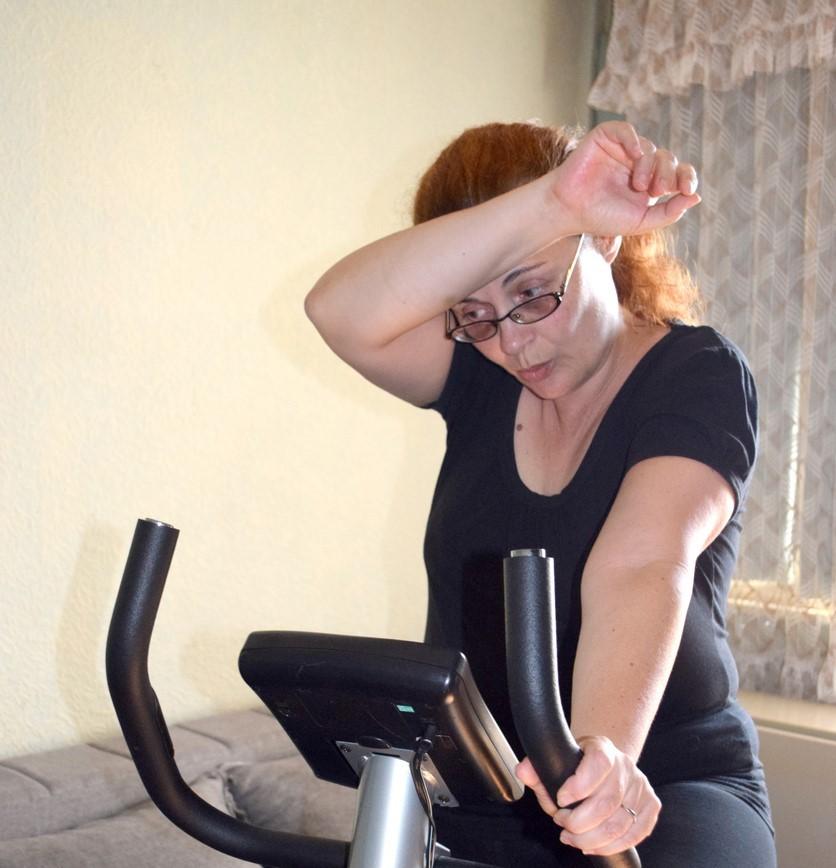Two studies published today reveal new findings on long COVID, with one showing a possible role for cardiopulmonary exercise testing (CPET) for the evaluation of persistent symptoms, and the other finding a link between symptomatic infection and poor quality of life and reduced ability to complete daily activities.
Lower average peak oxygen consumption
In a systematic review and meta-analysis published in JAMA Network Open, a team led by University of California San Francisco (UCSF) scientists analyzed 38 CPET studies—mostly case series or cross-sectional studies of posthospitalization patients before widespread COVID-19 vaccination—in 2,160 patients 3 to 18 months after infection.
A total of 1,228 patients had long-COVID symptoms, and 714 had reduced exercise capacity. The studies were extracted on Dec 20, 2021, and May 24, 2022, and a preprint search was conducted on Jun 9, 2022.
CPET, the gold standard for measuring exercise capacity and determining the differential diagnostic considerations of exercise limitations, is useful for the evaluation of unexplained shortness of breath, heart failure, lung disease, and preoperative assessments, the study authors said. It is a type of stress test and has also been used in research into persistent symptoms after severe acute respiratory syndrome (SARS), shortness of breath in HIV patients, and exercise intolerance in patients with chronic fatigue syndrome.
After participants' resting cardiopulmonary indicators are measured, they exercise on a stationary bike or treadmill while their gas exchange and cardiopulmonary parameters are monitored. "Measuring oxygen consumption (V̇o2) allows for objective and reproducible determination of exercise capacity, determination of anaerobic threshold, and classification of limitations," they wrote.
More than 3 months after infection, average peak oxygen consumption (VO2 max) was lower by 4.9 milliliters per kilogram per minute (mL/kg/min) (95% confidence interval [CI], -6.4 to -3.4) in symptomatic patients, according to nine studies of 464 long-COVID patients and 359 asymptomatic patients. Cardiac, ventilatory, and pulmonary vascular limitations were uncommon.
Decline equal to a 10-year drop in capacity
The 4.9 mL/kg/min difference is equivalent to 1.4 metabolic equivalent of tasks (METs), an indicator of energy expended during exercise, first author Matthew Durstenfeld, MD, said in a UCSF news release.
"This decline in oxygen peak rate would roughly translate to a 40-year-old woman with an expected exercise capacity of 9.5 METs, dropping to 8.1 METs, the approximate expected exercise capacity for a 50-year-old woman," he said.
Four studies used longitudinal CPET in a patient subgroup, finding that median peak VO2 increased from 18.0 to 20.5 mL/kg/min from 2 to 6 months but remained lower than that of controls (28.1 mL/kg/min).
One study identified no change in peak VO2 over 3 months in patients with reduced exercise capacity, while another study showed higher peak VO2 in young athletes 5 months after symptom resolution, and another found that average peak VO2 rose from 17.8 to 20.5 mL/kg/min after 8 weeks of cardiac rehabilitation.
"Most studies suggest higher acuity during acute infection (intensive care unit–treated vs hospitalized vs nonhospitalized patients) is associated with worse exercise capacity, although this is not a universal finding," the researchers wrote.
The researchers said that the reduced exercise capacity may be attributable to deconditioning, inefficient breathing, chronotropic intolerance (an inability to increase heart rate), and abnormal peripheral oxygen extraction (ratio of oxygen consumption to oxygen delivery, or tissue oxygenation), all of which were common in the included studies.
The authors cautioned that their findings had a very low level of certainty. "Despite the large number of participants included, the overall quality of the evidence is poor, owing to the small sample size of most studies, selection bias, variability in symptom ascertainment and CPET interpretation, inadequate methods to address confounding, and lack of appropriate statistical methods," they wrote.
The researchers called for future research, including studies on the mechanisms of dysfunctional breathing and chronotropic incompetence; longitudinal evaluations to understand patterns in exercise capacity after COVID-19; and interventional trials of potential treatments, including the use of rehabilitation to address deconditioning.
Symptoms tied to long COVID
In Scotland, University of Glasgow researchers led a study of 31,486 symptomatic COVID-19 patients and 62,957 never-infected patients followed at 6, 12, and 18 months with questionnaires and linkage to hospitalization and death records. The research was published in Nature Communications.
Median participant age was 45 years, 39% were male, 91% were White, 30% had at least one chronic condition, 16% had two or more chronic conditions, and 4% had received at least one dose of COVID-19 vaccine by baseline.
Of the 31,486 symptomatic COVID-19 patients, 6% had not recovered at follow-up, and 42% had only partially recovered. Nonrecovery was tied to hospitalization, age, female sex, socioeconomic deprivation, Black and South Asian race, respiratory illness, depression, and underlying medical conditions.
Previously symptomatic patients had poorer quality of life, impaired ability to participate in daily activities, and 24 lingering symptoms such as breathlessness (odds ratio [OR], 3.43), heart palpitations (OR, 2.51), chest pain (OR, 2.09), and confusion (OR, 2.92). Asymptomatic infections were not linked to adverse outcomes, and COVID-19 vaccination was tied to decreased risk of 7 symptoms.
The most common symptoms among the 21,525 infected patients with lingering symptoms were fatigue, headache, and muscle aches or weakness, but these symptoms were also often reported by never-infected participants.
Patients with symptomatic infection were also more likely to have three or more symptoms than their never-infected counterparts (14,236 [45%] vs 19,613 [31%]). While taste and smell generally improved from 6 to 12 months, there were increased reports of a dry or productive cough from 6 to 18 months.
"Sequelae were more likely following severe infection and were not observed following asymptomatic infection, and pre-infection vaccination may be protective," the authors concluded.























